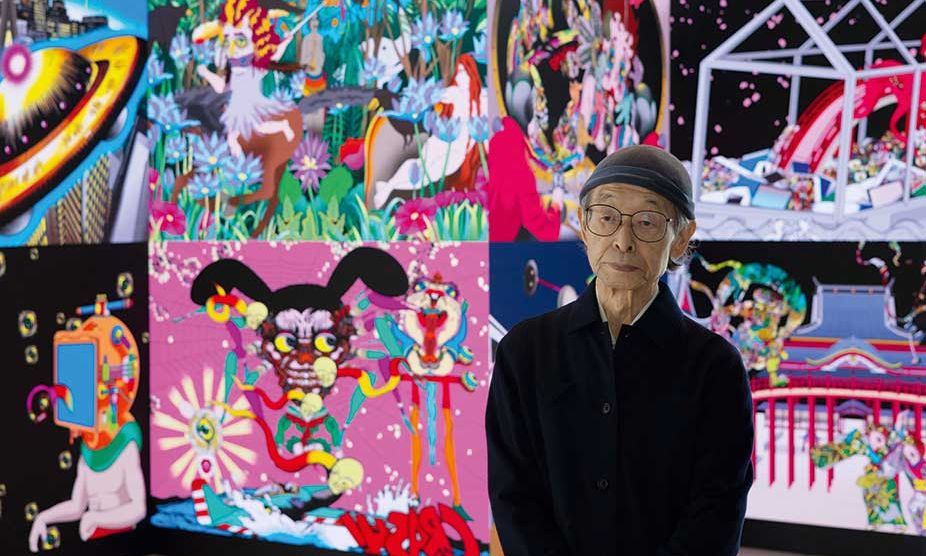Remember this: Tanaami was fascinated by the way humans alter their memories over time © Keiichi Tanaami/Courtesy of NANZUKA
The late Keiichi Tanaami (1936-2024) has entered into eternity, but the afterlife is hardly new territory for him. The Japanese Pop artist often blurred lines between this world and other realms in his colour-saturated works ranging from posters to films, sculptures to brand collaborations. To Tanaami, who was a child during the firebombing of Tokyo in the Second World War, death was viscerally real from a young age, haunting his imagination and fuelling his creativity.
The artist’s first large-scale retrospective opened at the National Art Center, Tokyo (NACT) just two days before he died at the age of 88. He was involved in its planning even while hospitalised, and his spirit is present in the show in every sense of the word. Nearly a dozen rooms tell the full story of his art through more than 500 works, including new and recently rediscovered pieces bursting with his phantasmagorical style.
Trained in graphic design, Tanaami expressed interest in Pop art and serialisation early in his career, believing that prints deserved greater appreciation. The ironically titled silkscreens of ORDER MADE!! (1965) fill an entire wall with technicolour variations of striped jackets, occasionally incorporating images of the bomber planes that terrorised him in childhood.
The art historian Hiroko Ikegami has noted the influence of Roy Lichtenstein and Andy Warhol on Tanaami’s work, while also pointing out its affinity with contemporaries like Tiger Tateishi, Tadanori Yokoo and Ushio Shinohara, pioneers of Tokyo Pop who combined American cultural references with symbols of Japan and art from the Edo period (1603-1868). Realm of the Afterlife/ Realm of the Living (2017) offers a summation of Tanaami’s maximalist collage aesthetic, filled with favoured themes such as fighter jets, skulls, sexualised feminine figures and animals quoted from the works of the 18th-century painter Ito Jakuchu.
The NACT retrospective is a rare chance to see many of Tanaami’s films, which bring to life the sense of motion so often suggested in his static compositions. Tanaami belonged to a generation of experimental animators working in “expanded cinema”, who used projectors in unconventional ways. His short films such as Crayon Angel (1975) demonstrate a dreamlike, episodic quality with uneasy undertones, similar to films by contemporary animators like Tabaimo, one of his former students at Kyoto University of Art and Design.
Presented under the apt title Adventures in Memory, Tanaami’s multifarious art reflects our human impulse to unconsciously alter our memories as we move through life. Images that first surfaced for the artist in dreams, fears and fantasies are repackaged and reborn, taking on new lives of their own.
• Keiichi Tanaami: Adventures in Memory, The National Art Center, Tokyo, 7-22-2 Roppongi, Minato-ku, until 11 November

